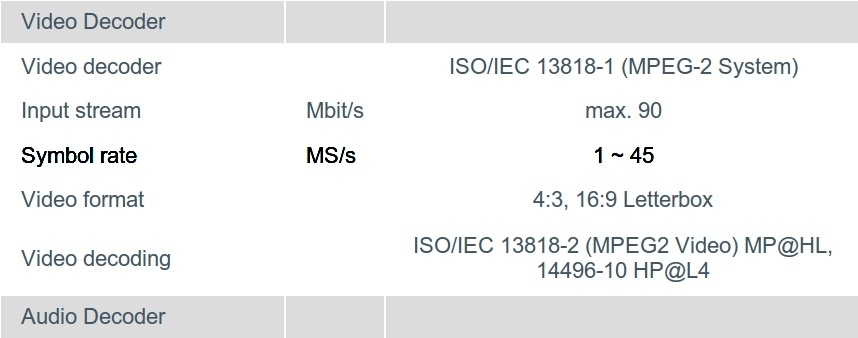HamTV Oscar News 201
HAM-TV: from theory to real practice
 Real time digital TV transmission for HAMs from ISS would be good news for the year 2013. This new feature belongs to the ARISS projects and its genesis was due to the willingness to enhance the “emotional impact” of the School contact and not just that…
Real time digital TV transmission for HAMs from ISS would be good news for the year 2013. This new feature belongs to the ARISS projects and its genesis was due to the willingness to enhance the “emotional impact” of the School contact and not just that…
Quite a lot has been written and presented so far about the background of the project as well as the “flying gears” that are going to be installed on the ISS, while we are probably suffering from a lack of practical knowledge on how to set up an effective ground station enabling us enjoy this new opportunity.
The aim of this brief talk is thus to try and fill this gap in an easy and direct way.
I do believe that the very first “switch” is to define whether we want to arrange a serious ground station able to fully support, for instance, a school contact or whether we are just curious to receive something, sometime.
This decision is quite important since it heavily impacts on the antenna system and its steering mechanism.
Antennas choice
Considering the link budget presented so far, we have to arrange something with a G/T of at least 1dB/K. I will save you from all the math, going straight to some practical examples. A good dish, properly fed, of about 1m diameter paired with a low noise front end will do the job, that’s all! With this setup we should be able to “hook” the signal while the ISS is 1000km away, which means a maximum acquisition time of about 5 minutes if passing just over our heads. For those who may not be acquainted with the G/T term, just a few words of explanation. For a successful radio link we do not need just “a lot of signal” but a good “signal to noise ratio”. Having a huge signal mixed with loud noise, would not help. The antenna gain is the factor which determines “how much signal” we receive, while its noise temperature gives a gauge of how much noise will be collected. Thus, the G/T ratio, expresses in a synthetic way how well (or bad) we will be able to receive a specific link and allows us to quickly compare different solutions.
Let see some examples:
|
Diameter m |
Efficiency % |
Antenna Temp. K |
Receiver noise figure |
Antenna Gain dBi |
Beam width ° |
G/T dB/K |
Max Expected Range km |
Max decoding time |
Note |
|
2 |
55 |
100 |
0,5 |
31,4 |
4,4 |
10 |
1600 |
7’10” |
1 |
|
1,2 |
50 |
200 |
0,9 |
26,6 |
7,3 |
2,3 |
1000 |
4’10” |
2 |
|
1 |
50 |
100 |
1,3 |
25,0 |
8,8 |
2 |
1000 |
4’10” |
3 |
|
0,7 |
40 |
150 |
1,5 |
20,9 |
12,5 |
-3,4 |
800 |
3’7” |
4 |
|
Helix, 10 lambda |
230 |
1,5 |
16 |
22,0 |
-9,4 |
500 |
1’13” |
5 |
Note 1: top station, very well tuned and optimized feeding of the antenna, placed on a quiet environment, EME grade preamplifier
Note 2-3: average station, the 20cm extra diameter of case #2 may help to manage a noisy environment. Good general care and low noise front end.
Note 4: entry level system, small dish, general purpose front end
Note 5: helix antenna such as the Wimo Helix1340, medium quality front end
All the maximum acquisition times, are estimated considering the best cases of passes at the zenith.
One of the key points would be a proper illumination of the dish: something about -14/-16dB to the edges should ensure the best G/T
Remind also that if you use a net dish, the wire spacing has to be closer than 10-15mm in order to do not loose further gain.
Antenna steering
This point is quite well known among satellite enthusiasts, but in this case it may offer some new challenges: not only is the antenna that has to track the ISS in the sky a little bulky, but it also has to do it with a high level of accuracy!
A dish of about 1m, loses half of its gain (-3dB) with a pointing error of just 4° and this could be a crucial issue, especially at the AOS and LOS. A 2m dish definitely needs to be approached as an EME station, while medium size dishes may be managed by a higher standard rotor taking care to fit the antenna on a well-balanced structure close to the rotor, on a very stiff tower or mast and checking for low plays and a proper zeroing of the position sensors.
Also the tracking software may need some tuning, especially for the updating of the steering, that must be executed all the time the target has moved just a pair of degree from the last setting position.
Down converters
Considering the quickest way to the goal, means using a commercial DVB-S box as receiver, we will need some kind of converter to “transform” the 2,4GHz from the ISS into a signal falling in the range 950-2150MHz (typical values for a DVB-S receiver). This box is in fact a down converter, as the ones we currently use for mode S, but with an output on the L band and not at 144 or 432MHz as we were used to. Home brewing and personal solutions are encouraged but at this very moment I’m not aware of any solid and ready to go, design to advertise. One place from which you may start to develop something suitable, could be this: http://www.azdtechnology.com/dca3k.htm.
The second choice after “to make” is of course “to buy” and luckily, the market is ready to offer some solutions such as:
|
Brand |
Model |
Gain dB |
NF dB |
Fin MHz |
Fout MHz |
Price € |
|
DG0VE |
Kon13-900 |
38-42 |
1,7 |
2330-2450 |
1430-1550 |
84 |
|
“ |
Kon13-900-PLL |
38-42 |
1,7 |
2330-2450 |
1430-1550 |
125 |
|
Kuhne |
MKU LNC 23 |
40 |
0,7 |
2320-2450 |
1403,5-1533,5 |
183 |
|
“ |
MKU LNC 23 TM |
40 |
0,7 |
2320-2450 |
1403,5-1533,5 |
216 |
|
Spectra |
SPDC240 |
35-45 |
0,8 |
2320-2600 |
1320-1600 |
Receivers
Considering the similarity of the modulation with the one used by commercial TVsat transmissions, an off the shelf, commercial FTA box would be an interesting choice. What looks an apparently an easy task may hide some nasty points. As presented here and there in the last few years, the HamTv will use quite a slow symbol rate, down to 1Msym/s or so, in order to narrow the bandwidth and therefore improve the link budget, while most of the other chosen parameters for modulation are quite common and therefore will not be a problem. The issue is that the S/R (symbol rate) might be hard to find on many commercial products as 1Mb is quite a slow stream of data, perfect for our purpose, but rarely used for commercial traffic. In fact, it’s quite easy to verify as most products seem not to manage anything slower than 2Mbits and several manufacturers do not even declare these figures…
 Example of DVB-S box specification. Note the range of the Symbol rate
Example of DVB-S box specification. Note the range of the Symbol rate
Reminder: When, as in our case, using QPSK modulation, the symbol rate is equal to half the bitrate: An emission at 2 Mbit/s corresponds to a symbol rate of 1 MSym/s or 1 Mbps.
So, what to do?
In fact, there are few offers on the market which clearly declare their compatibility with HamTV such as:
|
Brand |
Model |
Web |
|
Citycom |
CCR-540 |
www.citycom.tv/products/digital-receivers/dvb-s2-hdtv/ccr-540-hd.html |
|
Boca |
Digi 500 |
www.sat-receiver-world.com/producer/boca/boca-digi-500-ota.html |
|
Pyxis |
Styx F-9000 |
www.optex.fr |
In addition, it has been found that some receivers with no declared specification or with the lower limit of S/R at 2Msym/s in fact do the job! Unfortunately the only way to discover them is just to test!
One interesting field to test are the receiver to be paired with a PC, usually in form of a PCI card or USB stick.
Given the uncertainty of this issue, it might be a good idea over the time, to create a common database for all enthusiasts where you will list the receivers tested and the results.
Some final tips
With the down link frequency being on, or close to, the one used by other services it would be good to spend some time to mitigate the impact of unwanted signals being present. I would therefore advise to switch off or at least keep far away from the antenna any:
-
Blutooth device such as mobile phones, earpieces, printers, etc.
-
Wifi such as mobile phones and mostly any local data network
-
ISM devices such as microwave ovens or industrial heating systems
-
Home Video senders, quite popular “jammers” on 13cm band…
Commercial DVB-S receivers are intended to operate with narrow dynamic range, therefore strong adjacent services would interfere the RX. If this is the case, a narrow and well-tailored filter, placed between the down converter and the DVB-S box should help a lot. A very effective one, could be designed following these directions: www.utaharc.org/utah_atv/interdigital1.html
In general there is nothing special with receiving HamTV, but general good care (low loss coax, hi quality connectors, etc) is absolutely required.
Conclusions
HamTv will be definitely one of the good news of the 2013. The real limitations and possibilities of the project will be discovered with the time going by, overlapping some real experience to the many simulations done so far. I wish you all the FUN!
Credits
A big thanks goes to my old Amsat-I colleagues who let me play with this funny project and to my friend Tracey Clark., for helping me with the “British English”.
IW4BLG

Great blog you have here.. It’s hard to find excellent writing like
yours nowadays. I really appreciate individuals like you! Take care!!
Thank you very much. I’ll try to improve it every day!